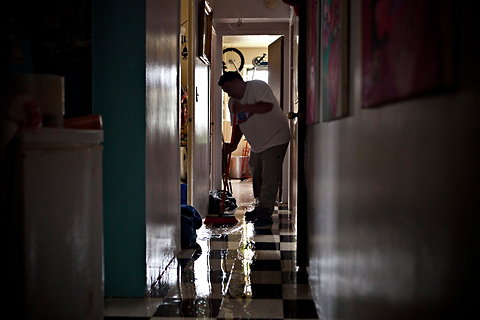For a number of years, MetLife has been using a Bermuda subsidiary, Exeter Reassurance, to reinsure several billion dollars’ worth of variable annuity contracts, in which customers pay in advance to receive guaranteed payments in retirement. By buying the reinsurance, MetLife was able to remove the obligations to these policyholders from its balance sheet.
Such transactions have become extremely popular in the life-insurance business in recent years, and regulators at the New York State Department of Financial Services have been investigating the deals since last July. The department’s superintendent, Benjamin M. Lawsky, recently called them “financial alchemy.”
“Let’s call it shadow insurance,” Mr. Lawsky said in a speech in April, recalling the so-called shadow banking system that appeared in the run-up to the financial crisis.
MetLife and other insurers have been trying to cope with the Federal Reserve’s long-running policy of keeping interest rates very low to help revive economic growth. Many life insurers are having trouble because they normally buy bonds to make good on annuities they sold in the past, and they cannot get the yields they need in the current low-rate environment. They can reduce the obligations on their balance sheets, however, by shifting them to reinsurers.
But buying reinsurance from an off-balance-sheet subsidiary “does not actually transfer the risk for those insurance policies off the parent company’s books,” Mr. Lawsky said in his speech. By law, reinsurance must involve a real transfer of risk; otherwise insurers are not supposed to use it to improve their balance sheets.
Mr. Lawsky said questionable reinsurance deals throughout the industry were increasing the likelihood that policyholders would not receive their payments at some point. He also expressed concern that they were causing systemic risk within the broader economy, the way the booming growth of mortgage-backed securities had done in the years before 2008.
MetLife’s chief executive, Steven A. Kandarian, said in an annual presentation to investors on Tuesday that repatriating MetLife’s policy obligations from Exeter “proactively addresses recent regulatory concerns” about such deals, adding that Mr. Lawsky’s inquiry had been an important factor. He also said the change would put MetLife in a better position to comply with new collateral requirements put in place by Congress after the financial crisis.
Mr. Lawsky issued a statement on Tuesday praising MetLife’s decision, saying the company had “acted wisely in bringing this subsidiary back to the United States, where it will be subject to stronger rules and oversight.”
MetLife said the transaction, which it expects to complete next year, was also part of an effort to lower the risk of its variable annuities business. It also said it was ratcheting back on sales of the annuities, aiming for $10 billion to $11 billion worth this year, compared with $28.4 billion in 2011.
MetLife’s shares closed down 1 percent, or 48 cents, to $42.82.
When MetLife’s transaction is complete, it will have returned Exeter to the United States and merged it with three state-regulated MetLife units: the MetLife Insurance Company of Connecticut; the MetLife Investors U.S.A. Insurance Company, now based in Delaware; and the MetLife Investors Insurance Company, based in Missouri. A spokesman said it was not yet clear where the merged company would be based.
Article source: http://www.nytimes.com/2013/05/22/business/metlife-will-repatriate-an-offshore-reinsurance-unit.html?partner=rss&emc=rss


